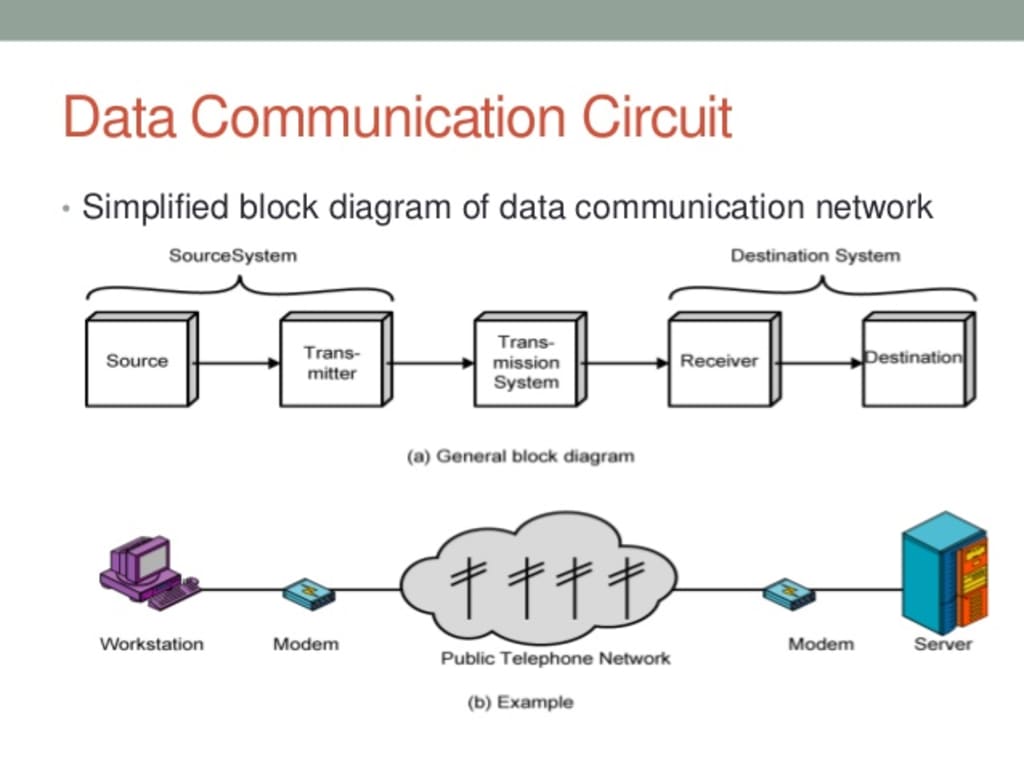
What is data transmission?
Data transmission refers to the process of transferring data between two or more digital devices. Data is transmitted from one device to another in analog or digital format. Basically, data transmission enables devices or components within devices to speak to each other.
How does data transmission work between digital devices?
Data is transferred in the form of bits between two or more digital devices. There are two methods used to transmit data between digital devices: serial transmission and parallel transmission. Serial data transmission sends data bits one after another over a single channel. Parallel data transmission sends multiple data bits at the same time over multiple channels.
Analog or analogue transmission is a transmission method of conveying voice, data, image, signal or video information using a continuous signal which varies in amplitude, phase, or some other property in proportion to that of a variable. The messages are either represented by a sequence of pulses by means of a line code (base-band transmission), or by a limited set of continuously varying waveform (pass-band transmission), using a digital modulation method. The pass-band modulation and corresponding demodulation (also known as detection) is carried out by modem equipment. According to the most common definition of digital signal, both base-band and pass-band signals representing bit-streams are considered as digital transmission, while an alternative definition only considers the base-band signal as digital, and pass-band transmission of digital data as a form of digital-to-analog conversion.
Data transmitted may be digital messages originating from a data source, for example a computer or a keyboard. It may also be an analog signal such as a phone call or a video signal, digitized into a bit-stream, for example, using pulse-code modulation (PCM) or more advanced source coding (analog-to-digital conversion and data compression) schemes. This source coding and decoding is carried out by codec equipment.
Types of Data Transmission
Parallel transmission – Several bits are transmitted together simultaneously within one clock pulse rate. It transmits quickly, as it utilities several input and output lines for sending the data.
Parallel transmission uses a 25-pin port with 17 signal lines and 8 ground lines. The 17 signal lines are divided as follows:
4 lines – initiate handshaking
5 lines – communicate and notify errors
8 lines – transfer data
Types of Serial Transmission:
There are two types of serial transmission – synchronous and asynchronous. Both of these transmission methods use bit synchronization.
Bit synchronization is necessary to identify the beginning and end of the data transmission.
Bit synchronization supports the receiving computer to recognize when data begins and ends during a transmission. Therefore, bit synchronization offers timing control.
Asynchronous Transmission – In asynchronous transmission data moves in a half-paired approach, 1 byte or 1 character at a time. It sends the data in a constant current of bytes. The size of a character transmitted is 8 bits, with a parity bit added at the beginning and at the end, making it a total of 10 bits. It doesn’t need a clock for integration—rather, it utilities the parity bits to inform the receiver how to translate the data. It is straightforward, quick, and cost-effective, and it doesn’t require 2-way communication.
Synchronous Transmission – In synchronous transmission, data moves in a complete paired approach in the form of chunks or frames. Synchronization between the source and target is required so that the source knows where the new byte begins, since there are no spaces between the data. This method offers real-time communication between linked devices.
Advantages and Disadvantages of Using Parallel Data Transmission:
The main advantages of parallel transmission over serial transmission are:
it is easier to program;
and data is sent faster.
Although parallel transmission can transfer data faster, it requires more transmission channels than serial transmission. This means that data bits can be out of sync, depending on transfer distance and how fast each bit loads. A simple of example of where this can be seen is with a voice over IP (VOIP) call when distortion or interference is noticeable. It can also be seen when there is skipping or interference on a video stream.
When is parallel transmission used to send data?
Parallel transmission is used when:
a large amount of data is being sent;
the data being sent is time-sensitive;
and the data needs to be sent quickly.
A scenario where parallel transmission is used to send data is video streaming. When a video is streamed to a viewer, bits need to be received quickly to prevent a video pausing or buffering. Video streaming also requires the transmission of large volumes of data. The data being sent is also time-sensitive as slow data streams result in poor viewer experience.
Data transmission is utilized in computer networking equipment such as modems (1940), local area networks (LAN) adapters (1964), repeaters, repeater hubs, microwave links, wireless network access points (1997), etc.
In telephone networks, digital communication is utilized for transferring many phone calls over the same copper cable or fiber cable by means of pulse-code modulation (PCM), i.e. sampling and digitization, in combination with Time division multiplexing (TDM) (1962). Telephone exchanges have become digital and software controlled, facilitating many value added services. For example, the first AXE telephone exchange was presented in 1976. Since the late 1980 s, digital communication to the end user has been possible using Integrated Services Digital Network (ISDN) services. Since the end of the 1990 s, broadband access techniques such as ADSL, Cable modems, fiber-to-the-building (FTTB) and fiber-to-the-home (FTTH) have become widespread to small offices and homes. The current tendency is to replace traditional telecommunication services by packet mode communication such as IP telephony and IPTV.
Transmitting analog signals digitally allows for greater signal processing capability. The ability to process a communications signal means that errors caused by random processes can be detected and corrected. Digital signals can also be sampled instead of continuously monitored. The multiplexing of multiple digital signals is much simpler to the multiplexing of analog signals.
Because of all these advantages, and because recent advances in wide-band communication channels and solid-state electronics have allowed scientists to fully realize these advantages, digital communications has grown quickly. Digital communications is quickly edging out analog communication because of the vast demand to transmit computer data and the ability of digital communications to do so.
The digital revolution has also resulted in many digital telecommunication applications where the principles of data transmission are applied. Examples are second-generation (1991) and later cellular telephony, video conferencing, digital TV (1998), digital radio (1999), telemetry, etc.
Data transmission, digital transmission or digital communications is the physical transfer of data (a digital bit stream or a digitized analog signal[1]) over a point-to-point or point-to-multi point communication channel. Examples of such channels are copper wires, optical fibers, wireless communication channels, storage media and computer buses. The data are represented as an electromagnetic signal, such as an electrical voltage, radio-wave, microwave, or infrared signal.
While analog transmission is the transfer of a continuously varying analog signal over an analog channel, digital communications is the transfer of discrete messages over a digital or an analog channel. The messages are either represented by a sequence of pulses by means of a line code (base-band transmission), or by a limited set of continuously varying wave forms (pass-band transmission), using a digital modulation method. The pass-band modulation and corresponding demodulation (also known as detection) is carried out by modem equipment. According to the most common definition of digital signal, both base-band and pass-band signals representing bit-streams are considered as digital transmission, while an alternative definition only considers the base-band signal as digital, and pass-band transmission of digital data as a form of digital-to-analog conversion.
Data transmitted may be digital messages originating from a data source, for example a computer or a keyboard. It may also be an analog signal such as a phone call or a video signal, digitized into a bit-stream for example using pulse-code modulation (PCM) or more advanced source coding (analog-to-digital conversion and data compression) schemes. This source coding and decoding is carried out by codec equipment.
About the Creator
Iftikhar Ahmed
Freelance writer.






Comments
There are no comments for this story
Be the first to respond and start the conversation.